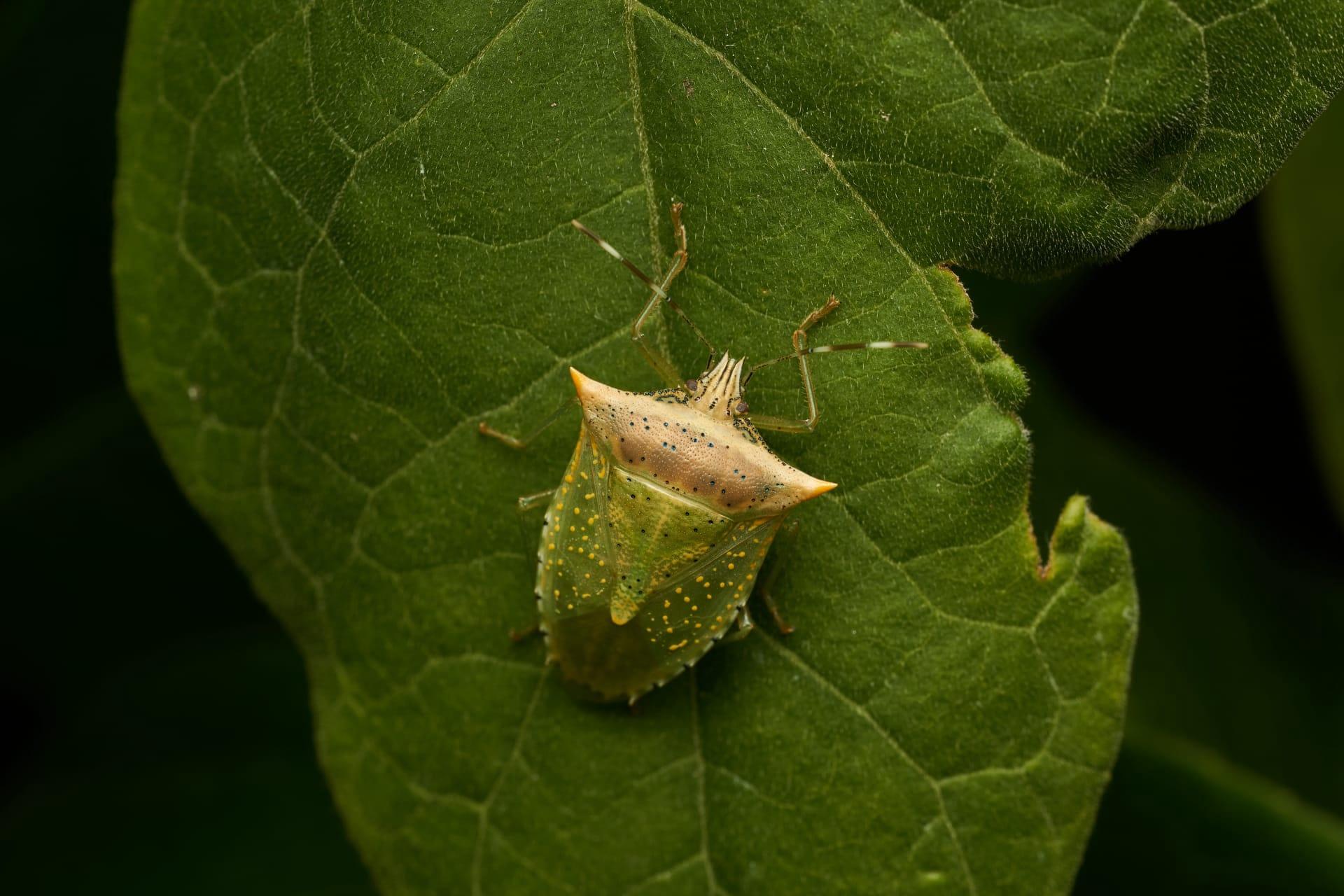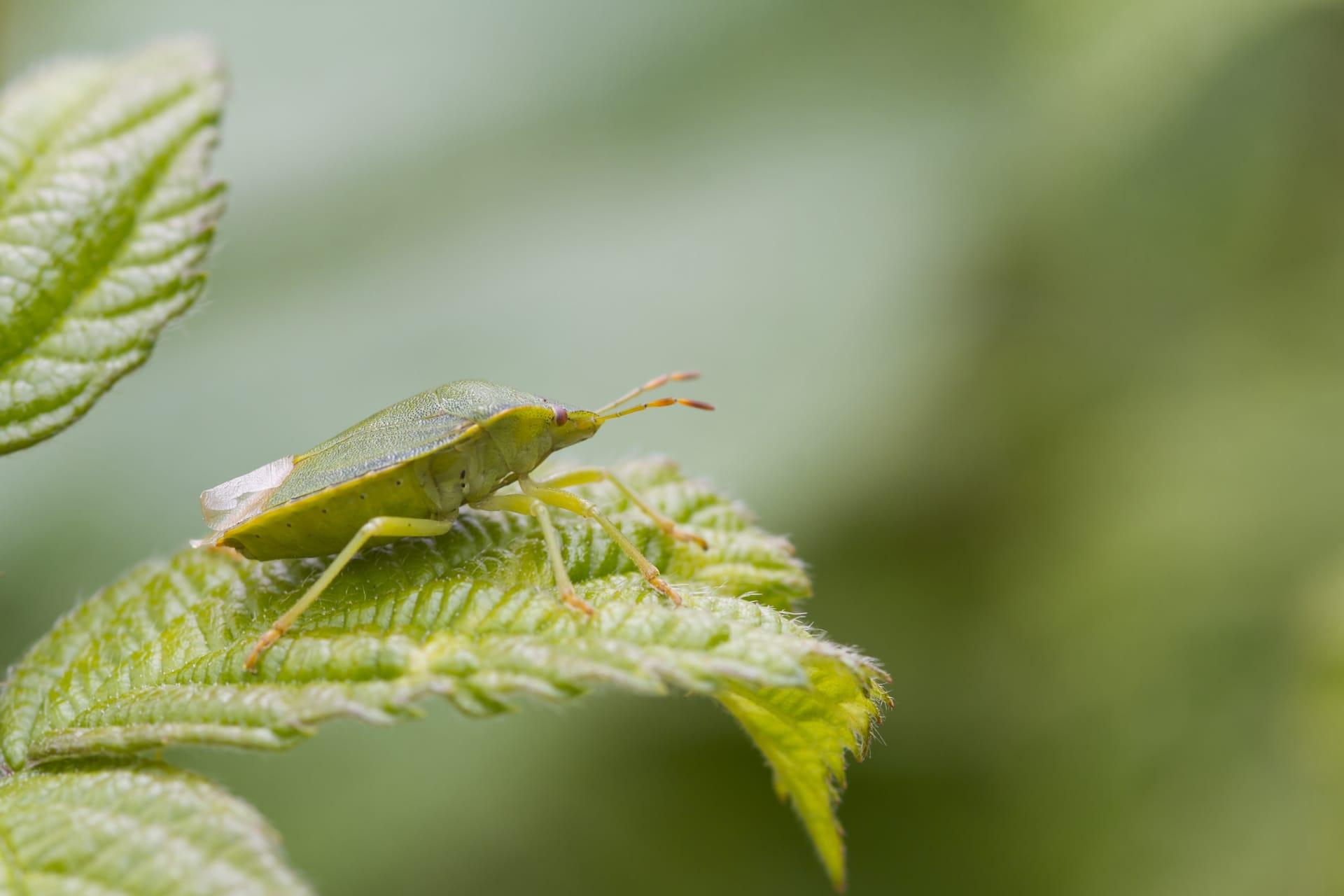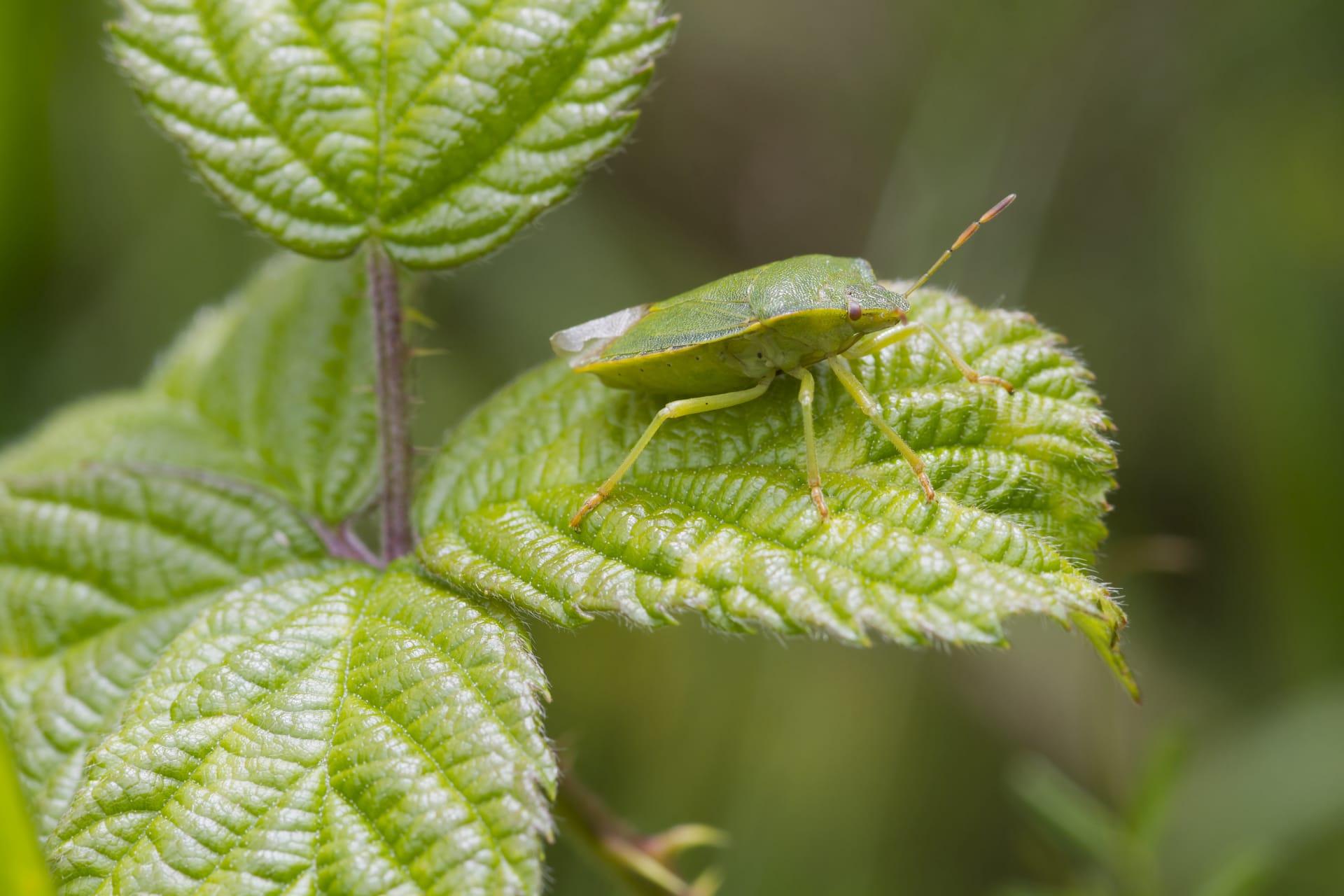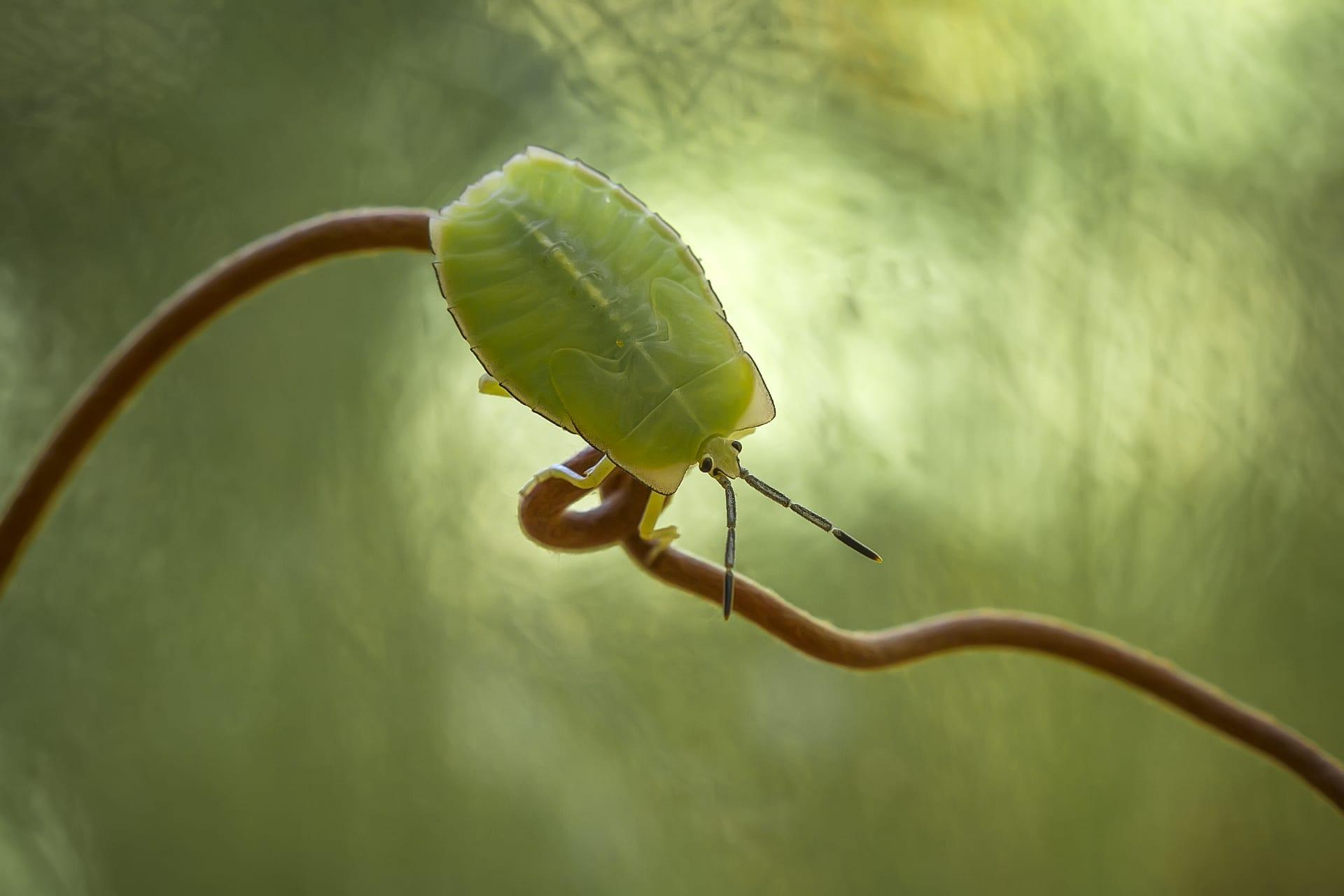Green Shield Bug Characteristics
- Home /
- Mini Encyclopedia /
- Animal /
- Green Shield Bug Characteristics
1
The Green Shield Bug, known scientifically as Palomena prasina, boasts a distinct emerald green hue that vividly stands out in its natural habitat. These bugs, typically measuring between 0.5 to 0.6 inches (1.3 to 1.5 cm) in length, display a shield-like shape, which contributes to their name. Their life span is quite remarkable for insects, living approximately one year, which includes going through the stages of egg, nymph, and adult.
One of the most fascinating organs of the Green Shield Bug is its scent glands, located on the underside of its thorax. These glands produce a pungent odor when the bug feels threatened, serving as a highly effective defense mechanism against predators. This odor is strong enough to deter most of their natural enemies, making it a critical survival tool in the wild.

2
Question: Why do Green Shield Bugs sometimes change color?
Answer: The color change in Green Shield Bugs is a seasonal adaptation. During the summer, they exhibit a vibrant green color, blending seamlessly with the foliage. However, as autumn approaches, their color shifts to a brown or bronze. This change is a survival strategy, allowing them to remain camouflaged amidst the changing colors of the foliage in different seasons. This color shift is triggered by shorter daylight hours and cooler temperatures, signaling the bug to prepare for overwintering.

3
The Green Shield Bug is known for its slow and deliberate movements. They are not agile flyers and typically move by crawling. When they do fly, their flight is usually short-ranged and somewhat clumsy. This lack of speed is compensated by their camouflaging color, which helps them avoid predators.
As for feeding, these bugs are primarily herbivorous. They use their piercing and sucking mouthparts to feed on plant sap. Young nymphs often feed on the undersides of leaves, while adults may feed on fruits and flowers as well. Their feeding habits can sometimes cause damage to crops, particularly to fruits like beans and tomatoes, where they leave small, dark spots.

4
The Green Shield Bug thrives in various environments, ranging from gardens and parks to forest edges. They prefer areas with abundant vegetation, as this provides both food and cover. These bugs are commonly found across Europe and in parts of Asia and North Africa.
Reproduction of the Green Shield Bug occurs in spring. The female lays clusters of eggs, usually on the underside of leaves. These eggs hatch into nymphs, which go through five instar stages before becoming adults. Each stage sees a gradual development in size and form, culminating in the adult shield bug. The entire process from egg to adult typically takes around one month, depending on temperature and food availability.

5
Book: "The Secret Life of Bugs: Discovering the Hidden World of Insects," published in the United States in 2018 by author David B. Williams. This book explores the fascinating world of insects, including a chapter dedicated to the Green Shield Bug. Williams delves into their life cycle, habitat, and the unique defense mechanisms they possess. The book is renowned for its engaging narrative and vivid descriptions, making it an excellent read for both entomology enthusiasts and casual readers alike.
Book: "Insects of the World: A Comprehensive Guide," authored by Martin Walters and published in the UK in 2014. This extensive guide covers a wide range of insect species globally, including a detailed section on the Green Shield Bug. Walters provides insights into their ecological role, feeding habits, and the challenges they face in changing environments. The book is praised for its thorough research and high-quality photographs, offering readers a deep dive into the world of insects.